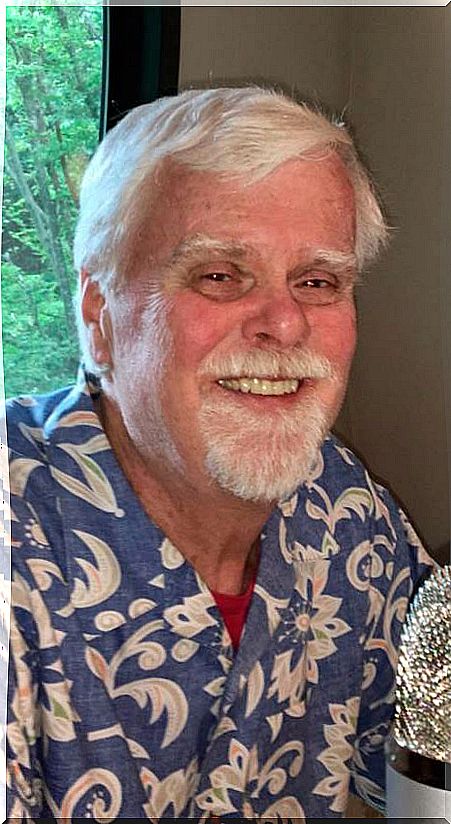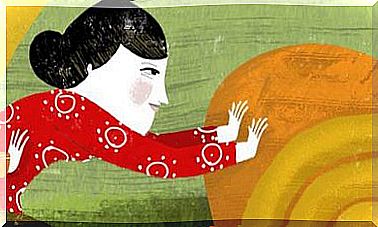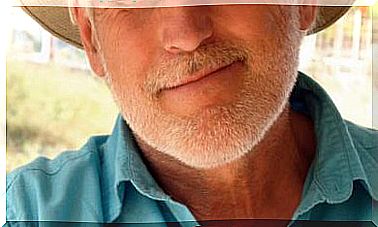“Depression Is Cured Without Drugs”
Dr. David D. Burns draws attention to the tendency of depressed patients to become dependent on their negative emotions, as if they were addicted. Something similar happens with drugs. However, there are alternatives for the depressed.

David D. Burns is Professor of Psychiatry at Stanford University. He has created a method that optimizes the results of each therapy session and is being taught to thousands of psychologists around the world. It offers a high success rate and speed of healing, especially in disorders such as anxiety and depression.
Burns points out the importance of identifying the resistance that the patient may have to heal. He is convinced that many people have a certain addiction to negative emotions and one of his favorite questions is: “If you had a magic button that when pressing it made your problem disappear, would you press it?”.
Burns’ method is included in his book Feeling Good (Ed. Paidós), of which 4.5 million copies have been sold worldwide. Reading it constitutes a therapy in itself against depression. “When I wrote it, I wanted my patients to read it between sessions,” says David D. Burns, a man who breathes calm and loves to cultivate a sense of humor.
Resistance to change is a problem in leaving depression behind
– What would you say to someone who distrusts psychological therapy?
“Well, I agree with him.” Many therapies that are being applied are ineffective and what they do rather is to put people over and over again behind closed doors. It is a very sad thing. I believe that the quality of psychological therapy both in the United States and in the rest of the world can be improved.
So I try to develop methods that really work. But it is discouraging to see that often the therapies and medications that are being recommended do not achieve good results. I know that many medications used are not effective, especially antidepressants.
I teach techniques to professionals, but it is difficult to spread them because many therapists, although committed to their work, are not motivated to learn something new. There are hundreds of schools of psychotherapy that rival each other. If the therapies obtain a very low success rate, then the patient becomes discouraged and this works against everyone.
–In recent years, the consumption of anxiolytics and antidepressants has more than doubled. Is today’s psychiatry abusing medication?
–In my opinion the benefits of anxiolytics, antidepressants and other medications are being exaggerated by the laboratories themselves. Most patients can be treated without medication, especially in cases of anxiety and depression, pathologies in which sometimes prescribing a medication responds more to financial interests than anything else. On the other hand, it is also true that sometimes a medication can save a life. In general, it seems good to me to try to carry out the therapy without medication.
– How would you summarize your contribution to cognitive behavioral psychology?
–Cognitive behavioral psychology is based on the idea and theory that negative thoughts generate negative emotions and that people have to change their beliefs and the way they think to change the way they feel. The TEAM – acronym for Test, Empathy, Objective Agenda and Method – takes into account, in addition to this, other aspects of human nature, such as the fact that often some people who suffer from an anxiety disorder or depression struggle with a part of themselves that they don’t want to change.
For example, when a person is suffering because they have a marriage or a love relationship that does not work, there is a part of them that wants to continue to be close to their partner and another that rejects or criticizes them. When someone suffers an addiction because they drink or eat too much, a part of themselves wants to change but there is also another part of the person who likes to drink or eat uncontrollably.
With TEAM we develop techniques to overcome the resistance of the patient, so that he is fully motivated to collaborate with the therapist. It is surprising to see how the techniques we apply after overcoming these resistances work much faster and more efficiently.
–Why, despite the suffering, the resistance to change on the part of the patient can be so great?
–Because your negative thoughts, each of your negative emotions and harmful habits also have certain advantages. Determining and becoming aware of what these advantages are is the first step to overcome the resistance to change them, which will be essential to be able to move forward in the process and will create the motivation to move forward. Two out of every three psychological patients show significant resistance to change.
–In which disorders is TEAM most effective?
–In anxiety disorders and their manifestations, such as panic attacks, eating disorders, obsessive-compulsive disorders, fear of speaking in public … In all forms of depression and anxiety, patients recover completely in a few sessions therapy. In relationship problems the patient may not want help and, in my experience, the time in which the problem is resolved is usually longer. In fact, there are many people who want to stay close to another, even if they have a hard time doing so. Addictions are more difficult to treat because the person does not really want to give up the alcohol or substance to which they are addicted.
Two effective tools: empathy and communication
– What role does empathy play in the therapeutic process?
-It is very curious because most psychologists believe they have the gift of empathy with their patients but when we test patients and therapists we observe that many professionals have the wrong idea of what is being useful to their patients about everything what happens in a session. If I have worried about empathy, it is because I myself felt that I did not have it and I have had to work hard to improve it. I wondered why others were doing better than me. If I created a system that allows me to develop empathy, it was in fact to help myself.
– Could you roughly explain what this system consists of?
– It is a system that I have called ‘The five secrets of effective communication’. The first step to improve communication when there is a conflict is to use “the disarmament technique”. That is, finding something true in what the other person is saying, even when it may seem totally unreasonable or unfair to one.
Second, you have to put yourself in the shoes of the other, trying to perceive the world through their eyes, for example paraphrasing their words or recognizing how they must be feeling based on what they say.
The third step is to ask gentle probing questions to discover a little more about what the other person thinks or feels.
Fourth, it is useful to be assertive, with phrases such as “I feel …” that express our feelings in a direct way, instead of focusing on statements or judgments such as: “it is you who is wrong”, “you get me out of kink “, etc.
Finally, even if one feels angry, find something genuinely positive to say to the other. These guidelines can be useful in ordinary life if we are willing to save a relationship, but they are also appropriate when a patient expresses dissatisfaction with the therapy.
The therapist’s ego
– Is it difficult to admit to the patient that what is being done is not working?
-It is about seeing it as an opportunity to improve. What helps is to see what I have done well and what I have done wrong, and to understand what I can do to improve the results. Upon reaching this level the suffering disappears. We do not know which technique will be the most effective. A failure of therapies is to stay with a single technique and apply it to all patients as a solution. I offer fifty different ones.
Erring in this case is not a problem, but rather a stimulus that allows us to try a new technique and thus find the one that will work with that patient sooner. When we train our students we see that at first they all fail. In most cases, his score does not reach 20 in any patient. On the other hand, when they practice “The five secrets of effective communication” their score can rise to 80. Now, to apply these five secrets of communication it is essential to put aside pride, so humility and honesty are crucial While the excess of ego is the biggest obstacle.
–It proposes to pass a test to the patient to evaluate their state of mind before and after the session as well as during the session itself. Why?
–We are observing very spectacular changes when we apply these measurements because thanks to them we know when we are doing it well and we also detect immediately when we are failing. We propose to obtain this information through a test because patients often have great difficulty in telling the psychologist about therapy problems. If a patient refuses to fill out the test, I tell them that I want to improve their life, but that I cannot do it without this information.
When we work with a patient, we usually make judgments about whether or not he is progressing. For example, if we have a patient who is in danger of committing suicide and we want to hospitalize him immediately, how can we know without a test how depressed he is, from 0 to 100? The degree of success in the best of cases after all the studies we have done is 10%. What the patient feels and what the therapist feels about the patient often have little to do with each other.
When evaluating the level of anger of a patient, the percentage of success of the therapist is very low. A patient may joke with you while feeling deeply depressed inside. Sometimes at the end of a consultation I have given the questionnaire and I have seen that the patient came out worse than he had entered.
It may be because their feelings were hurt during the session, perhaps the therapist tried techniques that did not work … Whatever it was, it is important to detect it because this information can save lives, especially if we are working with depression and a patient with suicidal tendencies. This way, the family can be notified and remedied before it is too late. I like to measure things because therapists often have very wrong ideas about what happens to the patient
The therapist can offer warmth and hope
–You have suffered anxiety problems. Do you tell your patients?
-Yes. Sometimes when I work with patients who suffer from anxiety I tell them that I have suffered that too. But I also tell them that I can change their life, which is what they want to hear. Therapy is not about crying with the patient and saying, “I too am a hopeless loser.” It is about giving warmth and also hope.
–Your latest book is about panic attacks, a growing disorder. How much can treatment be shortened by applying your methods?
–Sometimes we can solve them in a single session. I treated a woman who had suffered from panic attacks for ten years and was convinced that she would die of a heart attack. I had about five panic attacks each week and lived in shame. It is important to develop great trust and empathy with the patient because the techniques we apply are very extreme. I scheduled her a visit to give her a panic attack and she was very scared, but she agreed.
At the beginning of the session I told him to hyperventilate himself by breathing rapidly through his mouth. I was quite familiar with his negative thoughts and I was verbalizing them: “You are going to die. Your chest hurts, you are going to have a heart attack …”. This triggered a panic attack and she cried uncontrollably. He said he knew he was going to die. “Is there any proof that you are going to have a heart attack?” She didn’t pay attention. “Can you do aerobics if you are about to die? Try and see what happens.” She got up. “Let’s see if you can run without leaving the site,” I encouraged her. She started running and said she felt dizzy. “Try to run faster” …
And after running for a while he asked me: “Are you thinking how can I do this if I’m about to have a heart attack?” “Is this what you see in the ER?” I replied. “Do you see people with a heart attack who run and jump?” And suddenly she started laughing nonstop. And he was cured after suffering anxiety and depression for ten years.
–The technique sometimes leads the patient to experience the veracity of these negative thoughts.
–According to the thoughts that each patient has, the experiment will be different. In order to apply these techniques, a lot of trust is required on the part of the patient towards the therapist, but 9 out of 10 cases are cured with a single session after the professional has gained this trust. The patient has to face fear, face his deepest fears. Suffering exists when we are not specific, but when we confront reality, suffering disappears.
Technique and compassion
– Too much empathy can be dangerous?
–It is very good that the therapist feels a great emotion and can share it with the patient. Some of the best moments of my life have been when I have cried with my patients. However, when I was a resident I was told that I should never show patients how I felt. But then how will they open up to me? Tears and emotions are healing.
If the therapist is so open that he cries, if compassion is combined with the techniques we have developed, miracles will work. This is one of the reasons for the profound changes we have achieved.









